Discover 35 hidden attractions, cool sights, and unusual things to do in Szczecin (Poland). Don't miss out on these must-see attractions: Muzeum Narodowe w Szczecinie, Rusałka, and Jan Kasprowicz Park. Also, be sure to include Monument of Sailor in your itinerary.
Below, you can find the list of the most amazing places you should visit in Szczecin (Western Pomeranian).
Table of Contents
Muzeum Narodowe w Szczecinie
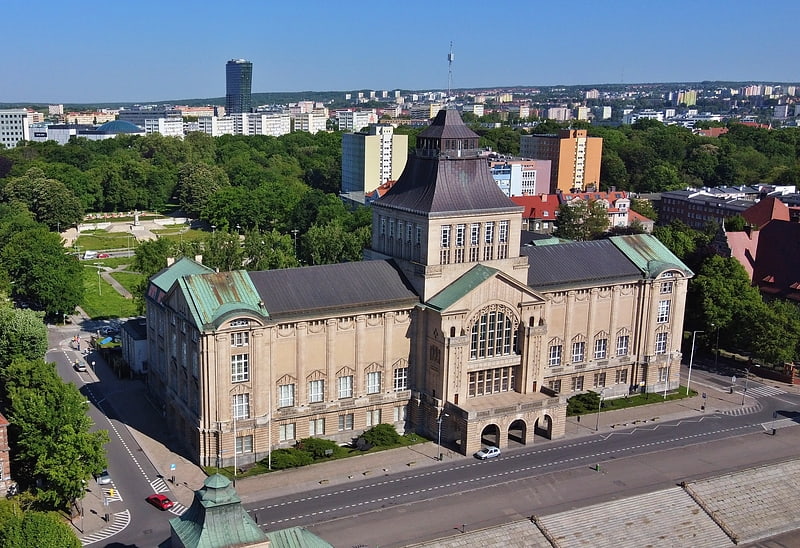
Museum in Szczecin, Poland. The National Museum in Szczecin is a museum in Szczecin, Poland, established on 1 August 1945. The main part of an exhibition is placed in Old House of the Pomeranian Estates, 1727-1729 by Gerhard Cornelius von Wallrave, Staromłyńska 27 Street.[1]
Address: 3 Wały Chrobrego, Szczecin (Dzielnica Śródmieście)
Rusałka
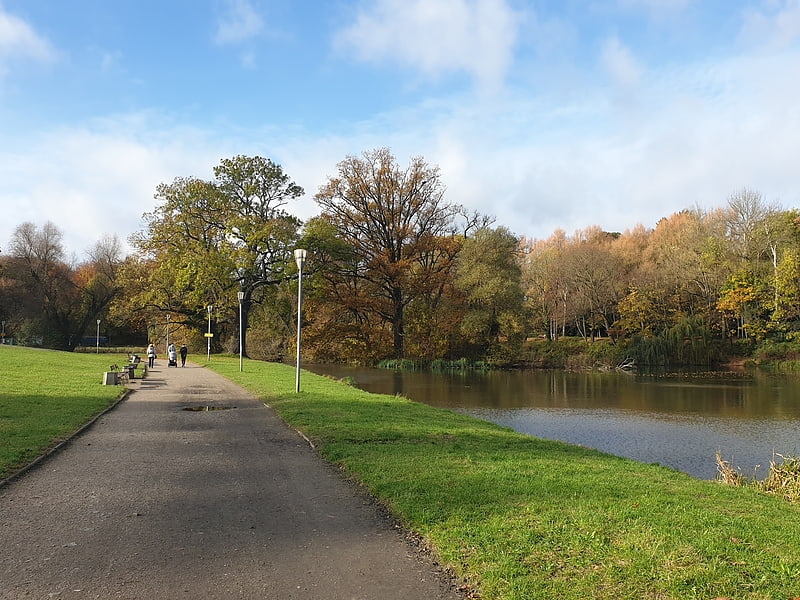
Rusałka, until 1945 known as Westendsee, is a dam lake in Szczecin, Poland located in northern part of Jan Kasprowicz Park. It's only inflow and discharge is Osówka stream. Its area is 0.03 km2, it is 0.67 km long and 0.07 km wide.[2]
Jan Kasprowicz Park
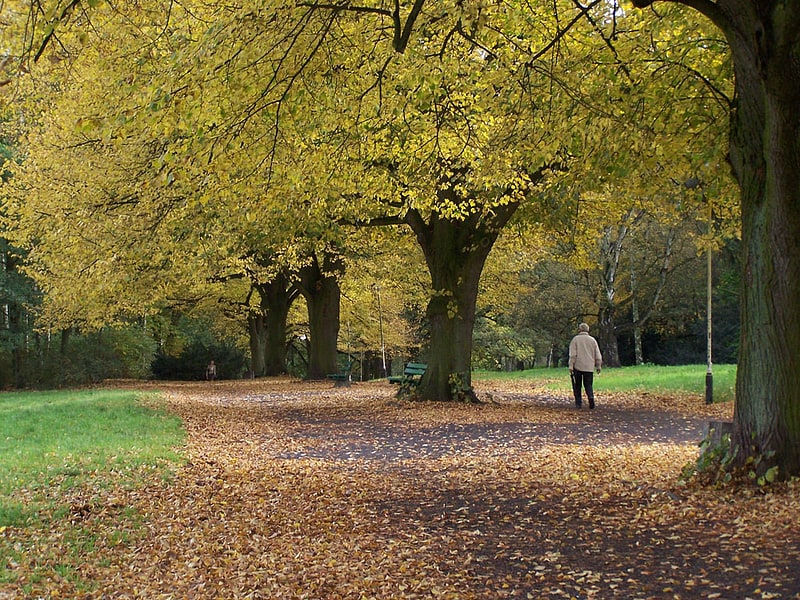
Park in Szczecin, Poland. Jan Kasprowicz Park, until 1945 known as Quistorp Park, is the biggest urban park in Szczecin, Poland located within municipal neighbourhood of Łękno near the boundaries of Śródmieście–Północ and Niebuszewo–Bolinko. The area of the park is circa 27.03 ha. Together with Arkonian Forest Park it forms Kasprowicz–Arkonian Park Complex which area is 91,69 ha. It borders the Jasne Błonia on the south east and the Stefan Kownas Arboretum on the north.[3]
Monument of Sailor

Monument of Sailor is a monument in Szczecin, Poland at the Grunwald Square at the John Paul II Avenue. It was designed by Ryszard Chachulski and completed on 19 June 1980.[4]
Szczecin Philharmonic
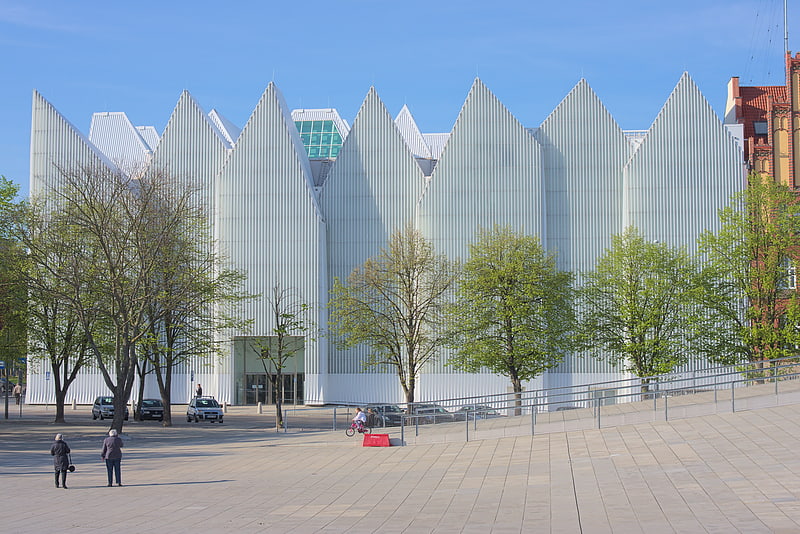
Also known as: Filharmonia im. Mieczysława Karłowicza w Szczecinie
Philharmonic hall in Szczecin, Poland. Szczecin Philharmonic, officially Mieczysław Karłowicz Philharmonic, founded in 1948, is a philharmonic of the city of Szczecin, Poland. In 2015, the new building of the philharmonic was awarded the European Union Prize for Contemporary Architecture.[5]
Szczecin Cathedral

Also known as: Bazylika archikatedralna św. Jakuba w Szczecinie
Catholic cathedral rebuilt in 1693. Szczecin Cathedral in Szczecin - was built by the citizens of the city and modeled after the Church of St Mary in Lübeck. It is the largest church in Pomerania and for many years after the reformation was part of the Pomeranian Evangelical Church, but since World War II and the handing over of Stettin from Germany to Poland it has been rebuilt as a Roman Catholic cathedral.[6]
Address: św. Jakuba Apostoła 1, 70-543 Szczecin (Dzielnica Śródmieście)
Różanka
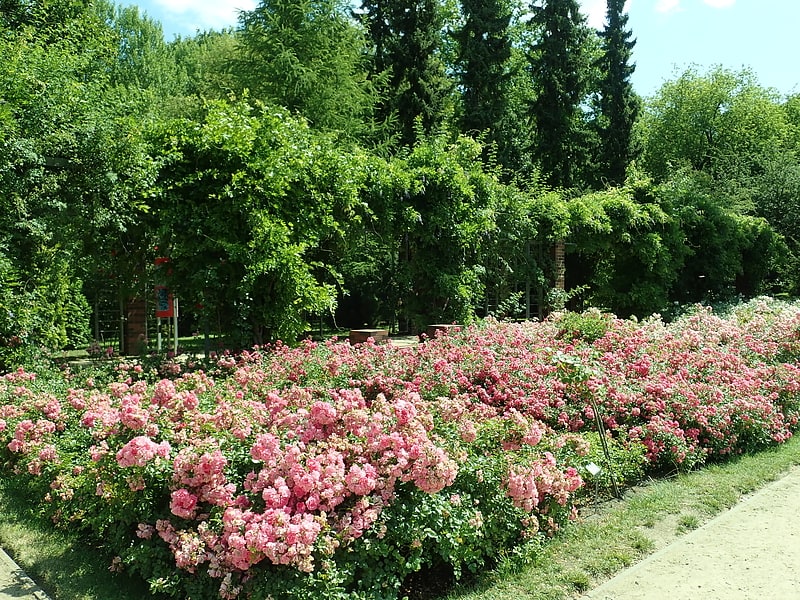
Also known as: Ogród Różany w Szczecinie
Botanical garden in Szczecin, Poland. The Różanka Rose Garden, is a two-hectare botanical garden in the Łękno area of Szczecin, Poland.
The Różanka Rose garden was established in 1928 to commemorate the World Gardening Exhibition. In 1935, the Bird Well was built and it included 4 concrete sculptures of flying geese by Kurt Schwerdtfeger. The garden survived World War II and until the 1970s was a public recreational place. Due to lack of funding for its maintenance, the garden gradually began to deteriorate. In 1983, the garden was put under the care of the Roman Catholic Church. Since 2005, it has been maintained by the Szczecin City Council.
Between 2006 and 2007, the City Council reconstructed the garden to its appearance in the 1930s. The work was completed on 20 April 2007. Over nine thousand roses of 99 varieties were planted.
Apart from the flowers, the garden also contains exotic trees and shrubs. The trees include chestnut, Amur cork trees, apple trees, cherry trees, American hornbeams, maples and Serbian spruces.[7]
Address: Pawła Jasienicy 3, Szczecin (Dzielnica Śródmieście)
Ducal Castle

Also known as: Zamek Książąt Pomorskich w Szczecinie
Landmark concert and exhibition venue. The Ducal Castle in Szczecin, Poland, was the seat of the dukes of Pomerania-Stettin of the House of Pomerania, who ruled the Duchy of Pomerania from 1121 to 1637.[8]
Address: ul. Korsarzy 34, Szczecin (Dzielnica Śródmieście)
Central Cemetery
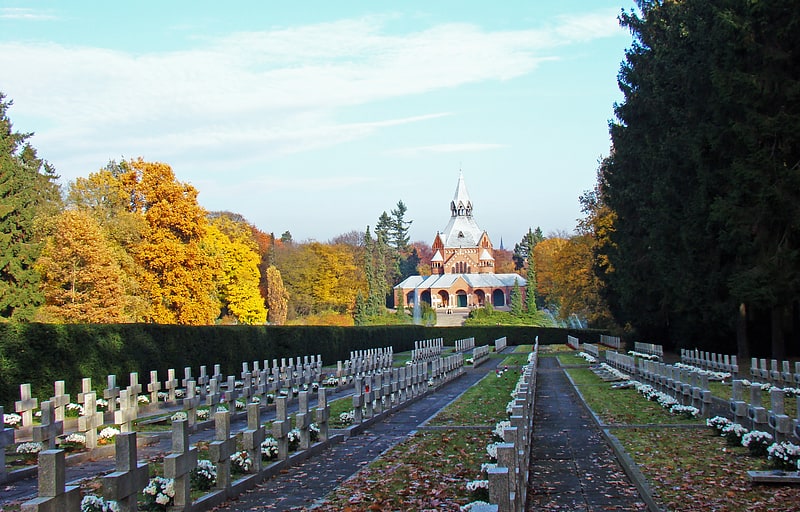
Also known as: Cmentarz Centralny w Szczecinie
Cemetery in Szczecin, Poland. The Central Cemetery in Szczecin is a municipal cemetery in Szczecin, Poland. With an area of over 167.8 hectares, and still expanding, it is officially the largest cemetery in Poland and the third largest cemetery in Europe.[9]
Stettiner General-Anzeiger Building
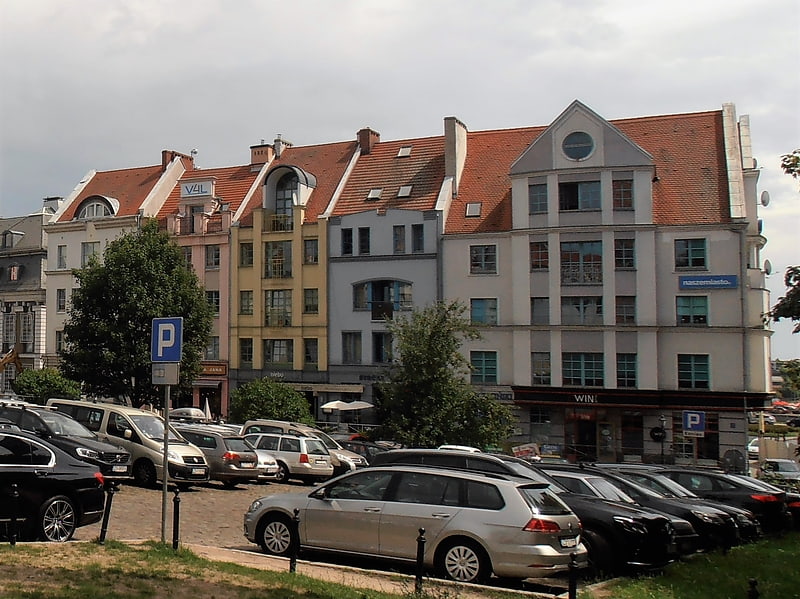
The Stettiner General-Anzeiger Building in Szczecin was an office building, which was located at the corner of today's Opłotki Street and New Market, in the Old Town, in the Centre district. It was destroyed in a bombardment in the 1940s.[10]
Art Academy of Szczecin
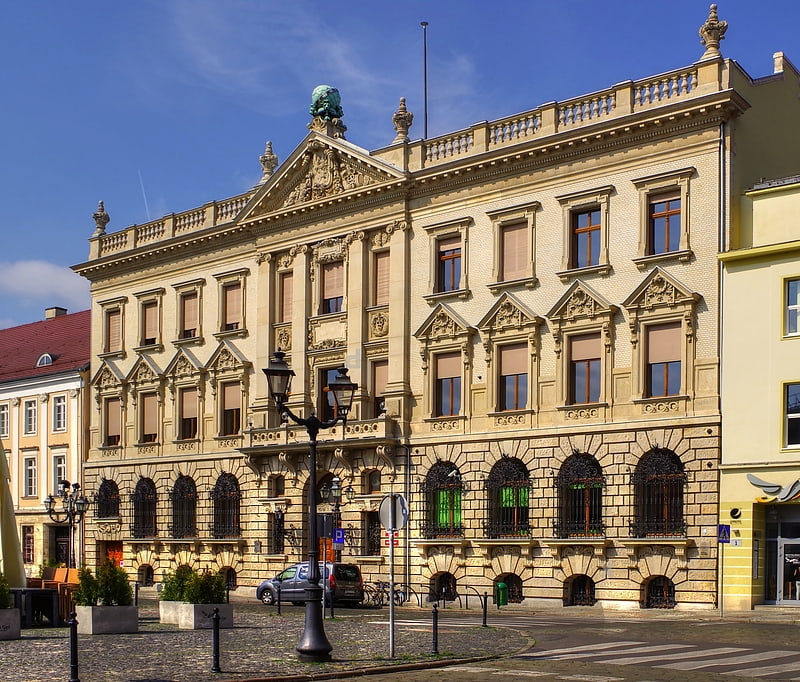
University in Szczecin, Poland. The Szczecin Art Academy is a public university in Szczecin, Poland, founded on September 1, 2010. The profile of the university includes both music and visual arts with programmes offered in two different art disciplines. It consists of 4 faculties with BA and MA courses.[11]
Address: 2 plac Orła Białego, Szczecin (Dzielnica Śródmieście)
Dąbie Lake
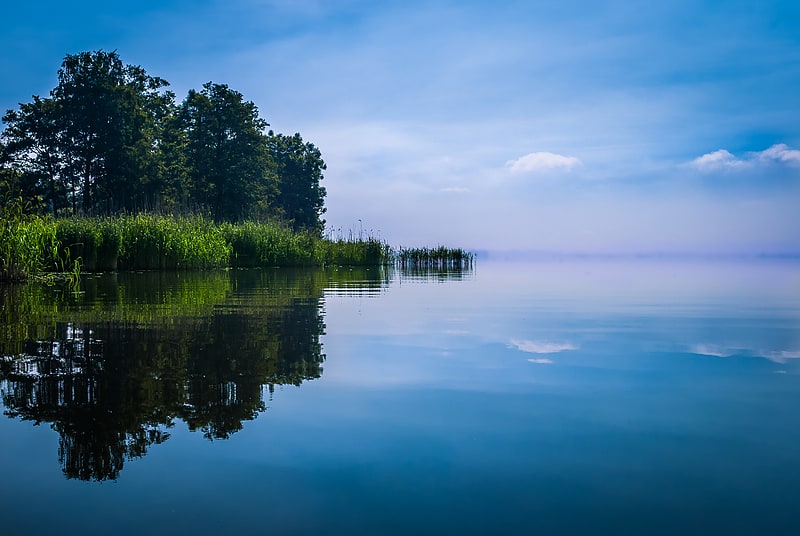
Also known as: Dąbie
Sizable area with beaches and a bike path. Dąbie is a lake in the delta of the Oder in northwestern Poland at Szczecin. To the South of the lake lies the Szczecin suburban district also called Dąbie.[12]
Szczecin Bismarck Tower
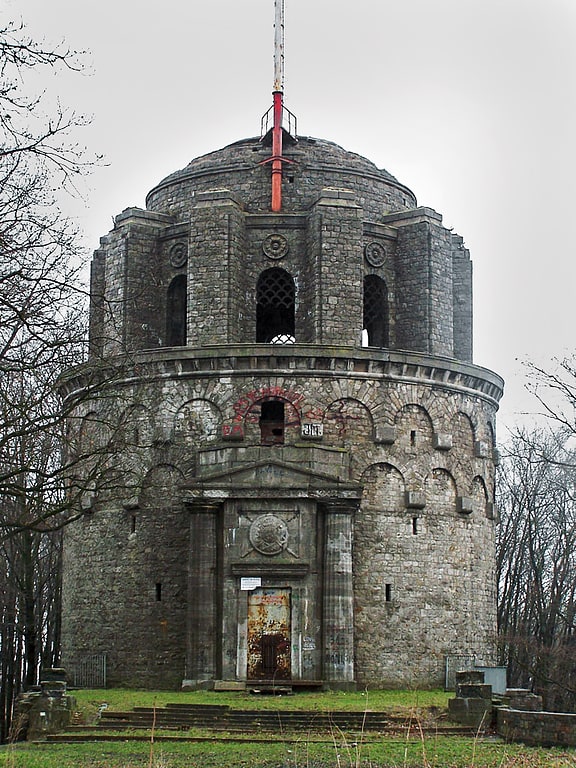
Also known as: Wieża Gocławska
Tower in Szczecin, Poland. One of the many Bismarck towers built in the former German Empire is located in Szczecin, now in north-western Poland.[13]
Address: 5a Narciarska, Szczecin (Dzielnica Północ)
Brama Portowa I
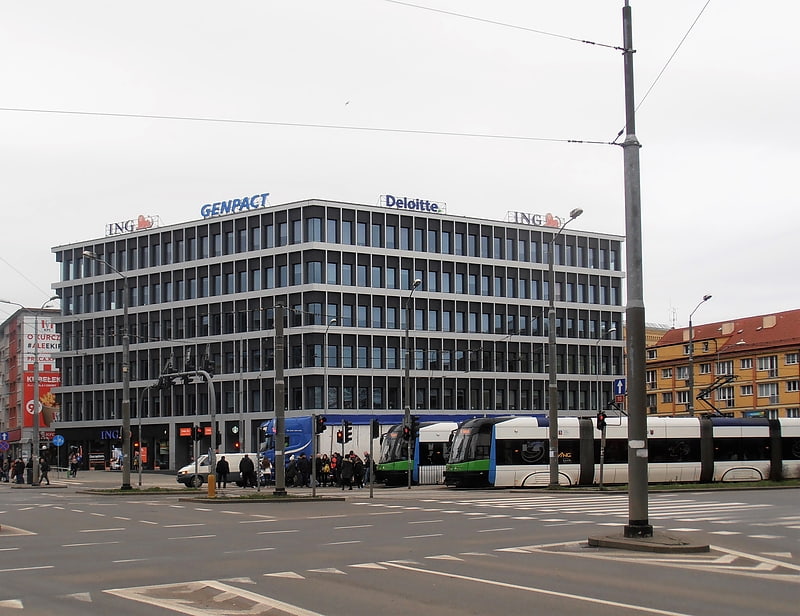
Brama Portowa I is an A-class office building located in the quarter bounded by Niepodległości Avenue, Wyszyński Street and Tkacka Street, in the Old Town, in the Śródmieście district. Brama Portowa I earned a LEED Gold certification.[14]
Old Town Hall
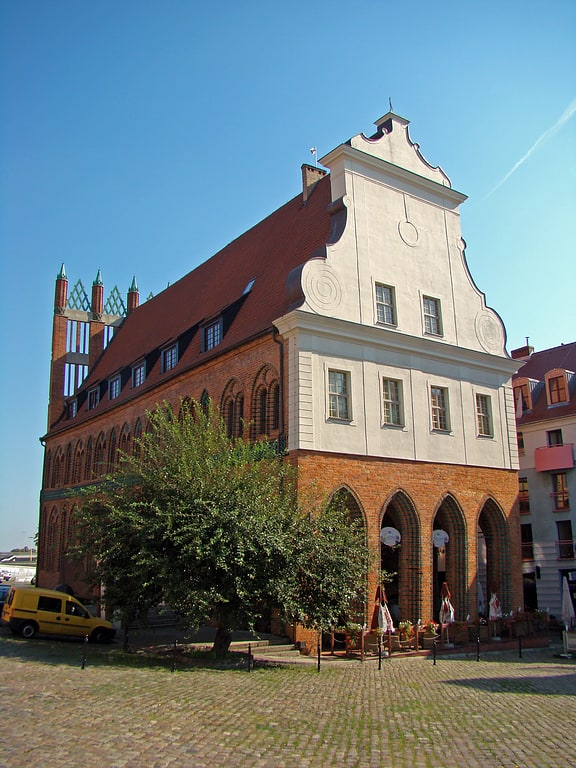
Also known as: Ratusz Staromiejski w Szczecinie
The Old Town Hall in Szczecin is the present day town hall in the old town district. It was built for the municipal government in the 15th century. Today it is used as a history museum.[15]
Wały Chrobrego

Historical landmark in Szczecin, Poland. Chrobry Embankment, previously known as Haken Terrace, is an observation deck in Szczecin, Poland. Located on an escarpment along the Oder river, it is 500 metre long and, together with National Museum, Ducal Castle and Cathedral Basilica of St James the Apostle, it forms an urban and architectural plan.
It was designed and constructed under the supervision of Wilhelm Meyer-Schwartau between 1902 and 1921. It was commissioned by city mayor, Hermann Haken, after whom it was originally named following his death. After the city was transferred to Poland at the end of World War II, the observation deck was renamed after Bolesław I the Brave, a duke of Duchy of Poland and later a king of Kingdom of Poland, known in Polish as Bolesław Chrobry.[16]
Stare Miasto

Neighbourhood in Szczecin, Poland. Stare Miasto is a municipal neighbourhood of the city of Stettin, Poland, situated on the left bank of the Oder river. It is the oldest historical district in the city. As of March 2021 it had a population of 3,901.[17]
Śródmieście
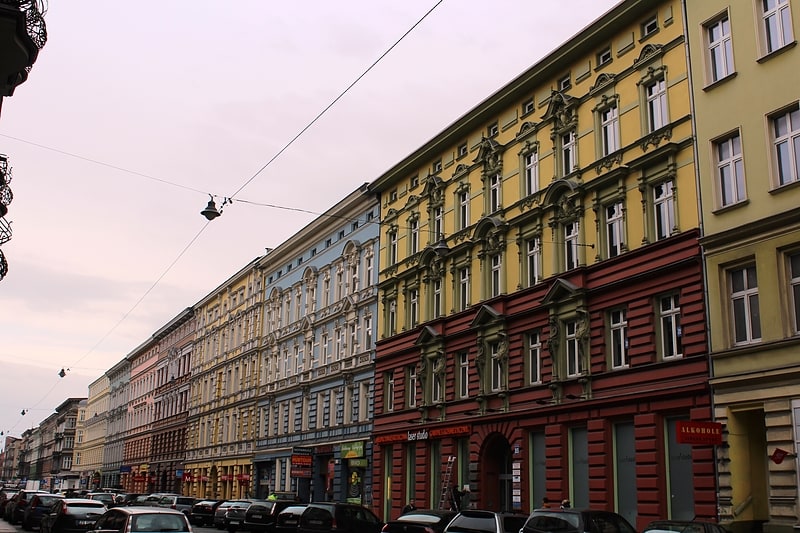
Śródmieście is one of four districts of Szczecin, Poland situated in central part of the city. As of March 2015 it had a population of 118 702.[18]
Kościół Farny świętego Jana Chrzciciela

Basilica of St. John the Baptist in Szczecin - a neo-Gothic hall church on a Latin cross plan in the center of Szczecin, at the intersection of Bogurodzica and Kaszubska Streets.
Address: 3a Bogurodzicy, Szczecin (Dzielnica Śródmieście)
Wojska Polskiego Avenue
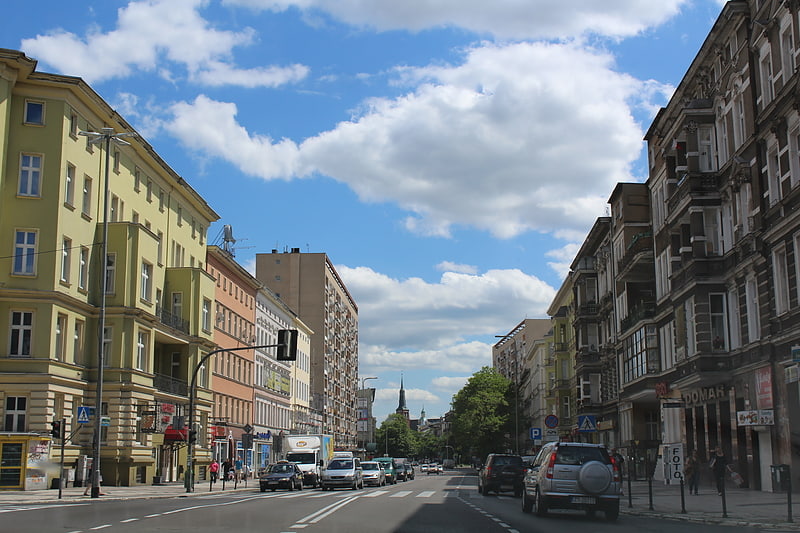
Main street. The Wojska Polskiego Avenue is one of the main streets of the Polish city of Szczecin, running from the south-east to the north-west. It lies on the territory of eight municipal neighbourhoods: Centrum, Śródmieście-Zachód, Śródmieście-Północ, Łękno, Pogodno, Arkońskie-Niemierzyn, Zawadzkiego-Klonowica, and Głębokie-Pilchowo. It constitutes a section of voivodeship road 115.
Some press articles, tourist brochures, websites and even the official website of Szczecin City Hall claim that Wojska Polskiego is the longest street in Szczecin. However, the longest street is Floriana Krygiera Street (formerly Autostrada Poznańska), which is approximately 8.5 kilometres long.[19]
Statue of Flora in Szczecin
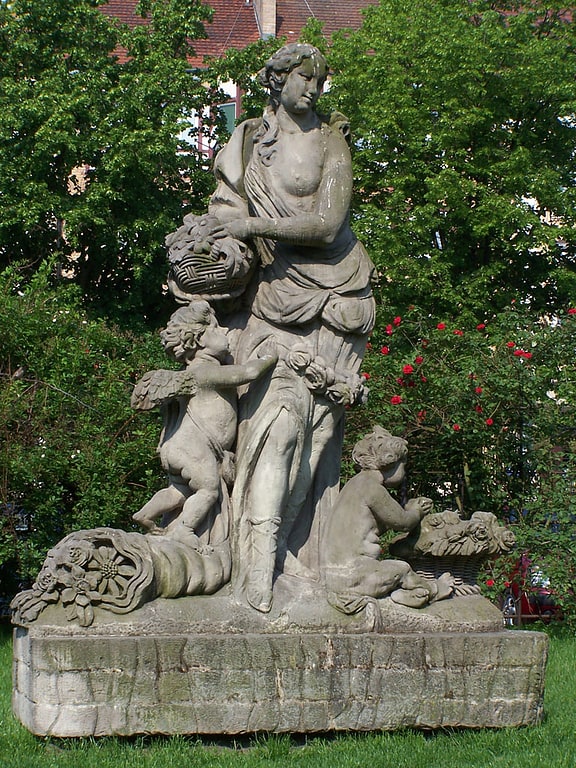
Also known as: Posąg Flory w Szczecinie
Sculpture. Statue of Flora in Szczecin is a baroque monument of Flora, a goddess of flowers and spring, located at White Eagle Square in Szczecin. The statue was made of sandstone around 1730 by German sculptor Johann Georg Glume design by Johann Konrad Koch. The sculpture group consists of Flora holding a basket of flowers along with two putti on both sides, one climbing on a horn of plenty and the second – laying near a basket with flowers. It was destroyed during the Second World War and restored in 1953.[20]
Brama Portowa

Port Gate, hist. german. Berliner Tor - one of the city gates of Szczecin, built in Baroque style between 1725 and 1727 according to the design of Dutch fortification designer Gerhard Cornelius van Wallrawe.
Address: 5 plac Brama Portowa, Szczecin (Dzielnica Śródmieście)
Muzeum Centrum Dialogu Przełomy
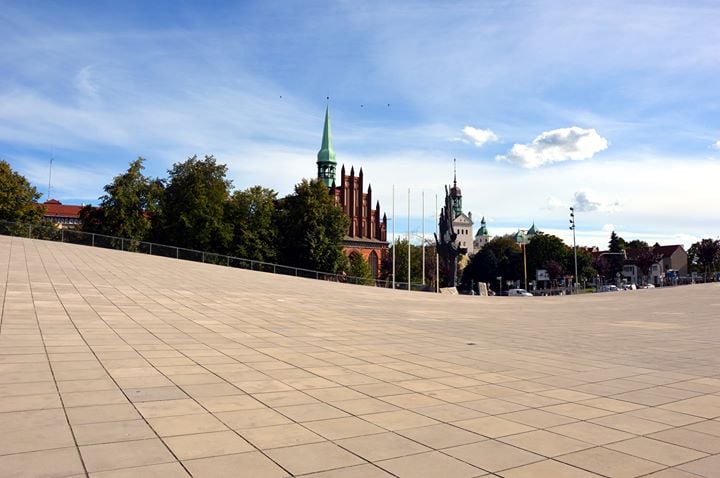
The Breakthroughs Dialogue Center is an exhibition pavilion of the National Museum in Szczecin, designed for exhibitions and education about the recent history of Szczecin and West Pomerania. It was designed by the architectural firm KWK Promes Robert Konieczny. It is an underground building, plunged into Solidarności Square, where the monument to the victims of December 1970 by Czesław Dźwigaj is located. Solidarności Square is located next to the former Provincial Committee of the Polish United Workers' Party (PZPR), the site of demonstrations and street fights in December 1970, during which 16 people died.
The aim of the exhibition is to show landmark moments in Pomeranian history, starting with the incorporation of Szczecin into the borders of the Polish state as a result of the Potsdam Agreements in 1945, with a special focus on the moments of social revolt (1970, 1981, 1989) that led to Poland regaining its sovereignty in 1989. The CDP opened to the public in late 2015 and early 2016.
Address: Plac Solidarności 1, Szczecin (Dzielnica Śródmieście)
Centrum Żeglarskie
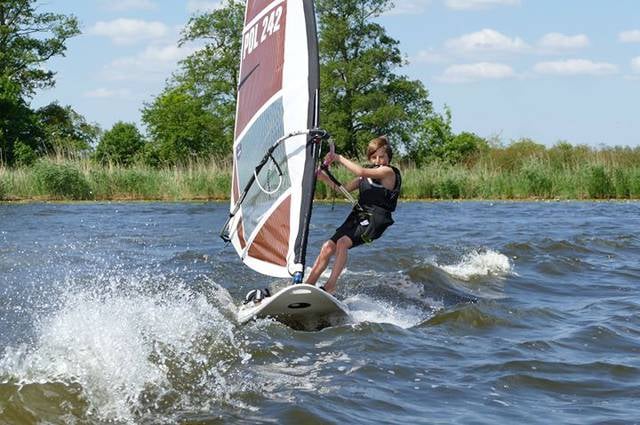
Sailing, Marina
Address: Ul. Przestrzenna 19, Szczecin (Dzielnica Prawobrzeże)
Most Długi
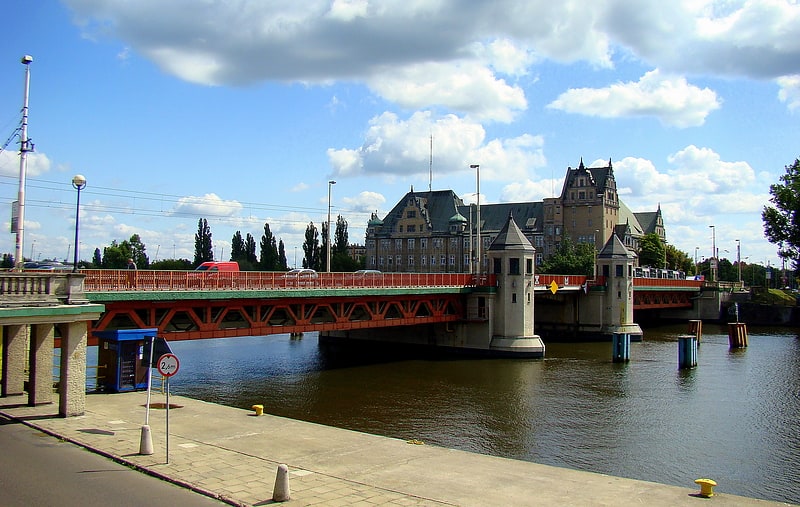
Długi im. Sobieskiego Bridge - a bridge over the Western Odra in Szczecin, connecting the part of the city lying on Łasztownia with the center. It has an important transport function.
Address: Most Długi, Szczecin (Dzielnica Śródmieście)
Port of Szczecin
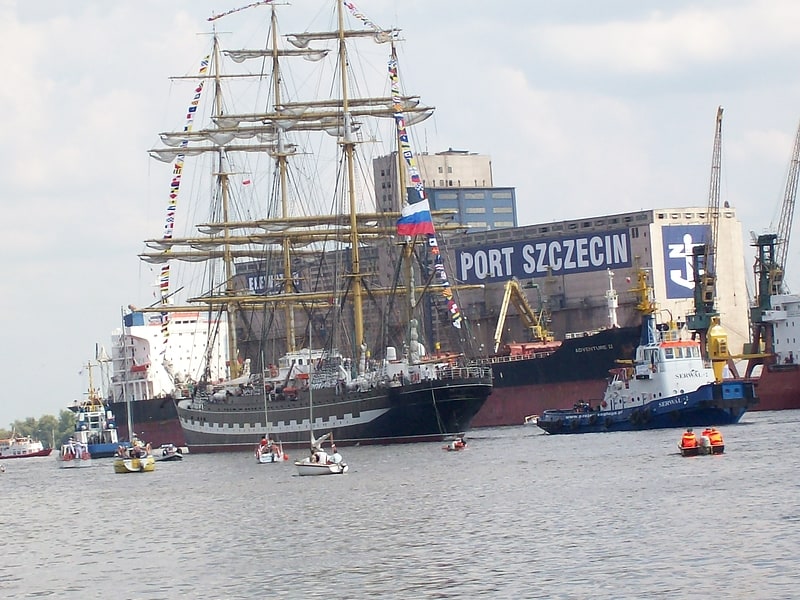
Also known as: Port morski Szczecin
The Port of Szczecin is a Polish seaport and deep water harbour in Szczecin, Poland. It is located at the Oder and Regalica rivers in the Lower Oder Valley, off the Szczecin Lagoon. In the past, the port included the now defunct Szczecin Shipyard. A free trade zone has been designated within the port area.
In 2006, cargo traffic in the seaport equaled 9,965,000 tons, comprising 16.5% of all cargo traffic in Polish seaports. In 2007, the port was entered by 2895 ships with gross tonnage of more than 100.
The Ports of Szczecin and Świnoujście are managed by a single authority, creating one of the largest port complexes at the Baltic Sea.[21]
Śródmieście-Północ
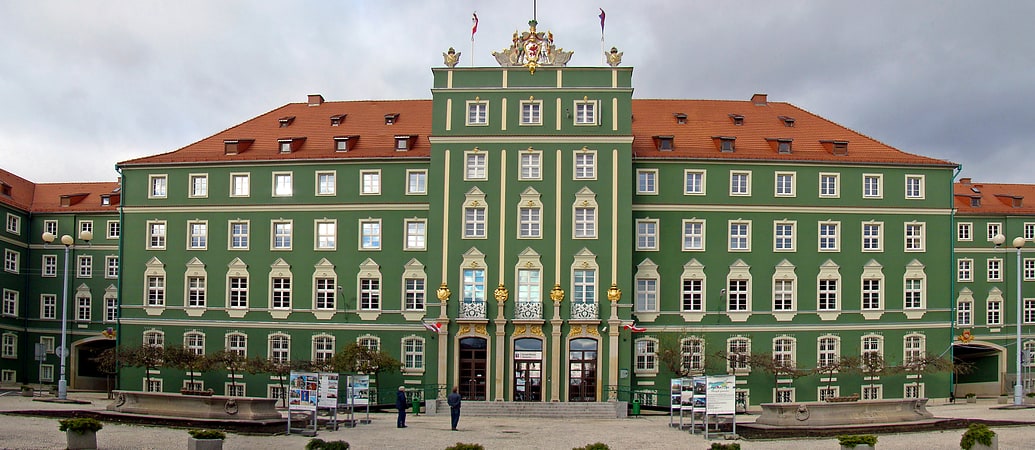
Neighbourhood in Szczecin, Poland. Śródmieście-Północ is a municipal neighbourhood of the city of Szczecin, Poland, in Śródmieście District. As of January 2011 it had a population of 12,507.[22]
Park Żeromskiego

Stefan Żeromski Park - the second largest city park in Szczecin, covering an area of about 22 ha.
It is located in the Srodmiescie district in the Stare Miasto residential area. It is bounded by Matejki, Malczewskiego, Parkowa, Kapitańska, Storrady, Wawelska, Starzyńskiego, and Zygmunta Starego Streets. The park's boundaries also mark the border with the Grabowo estate.
The park has the character of a dendrological park. There are about 177 species and varieties of trees (some of them more than a hundred years old) and shrubs, including: Chinese poplars, various species of oaks, weeping willows, black and gray walnuts, boxwoods, plane trees, ivies, ginkgoes, chestnuts, Japanese tulips, and many others. In the Park grow Amur cork tree, Japanese pearlwood, Caucasian wingnut, Manna ash, Pennsylvanian ash, Japanese pear tree, American dogwood, orange blossom, Chinese columbine, Chinese pallidum, stiff-leaved calla, hordovine calla, three-leaved tilia, bignonia surmia, gingko biloba, kolkhida maple, Trautvetter's maple, Tartarian maple, round-leaved maple, ginnala maple, gingko dogwood, western hemlock, western elm, plane tree, sawtooth cherry, purple willow, sweet chestnut, Japanese chestnut, red chestnut black walnut, pedunculate elm, plane tree, pedunculate oak, burgundy oak, silver linden, beech, Turkish hazel, Georgian oak, yellow pod, wonderful shrub, white rose. Of the coniferous trees in the park there are yews, black pine, Wejutka pine, European larch, eastern cedar.
Several sculptures and other elements of small architecture were placed in the park: Monument with the image of Stefan Żeromski - author: Slawomir Lewiński, 1978 Sculpture "Fountain" - Author: Sławomir Lewiński, 1975-77 Sculpture "Motherhood" - by: Anna Paszkiewicz, 1970 Sculpture "Prometheus" - author: Anna Paszkiewicz 1978 Boulder with plaques dedicated to "The Sons of the Regiment". - Author of plaques: Jan Kryszkiewicz 1978, 2005. Boulder "Adam" - natural monument
Prawosławna Parafia św. Mikołaja

St. Nicholas Church - an Orthodox concathedral and parish church in Szczecin. It belongs to Szczecin Decanate of Wrocław-Szczecin Diocese of the Polish Autocephalous Orthodox Church.
The temple is located at 1 Zygmunta Starego Street.
Książnica Pomorska

Public library in Szczecin, Poland. The Pomeranian Library, in full Stanisław Staszic Pomeranian Library is a Regional Library based in Szczecin, Poland. It is the largest humanities oriented library in West Pomerania, with a focus on social sciences, Pomeranian, Scandinavian and German subjects and Seamanship. The library possesses also general scientific reading room with books from other fields of science, including mathematics, natural and medical sciences.[23]
Address: Podgórna 15, Szczecin (Dzielnica Śródmieście)
Kościół świętej Rodziny
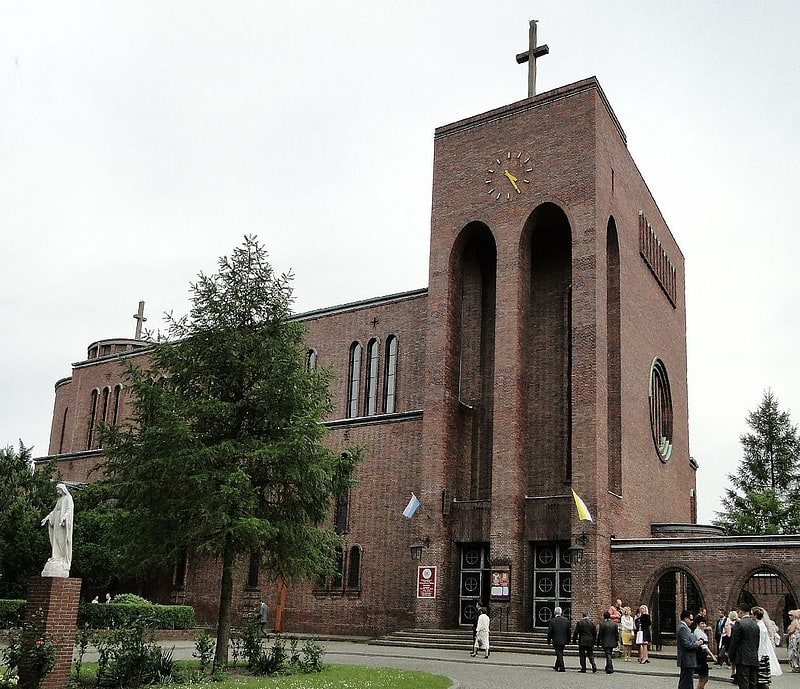
Holy Family Church in Szczecin - a modernist church originally built for the Evangelical parish. At that time it was called St. Cross. The building is located at present 28 Królowej Korony Polskiej Street in Szczecin.
Address: 28e Królowej Korony Polskiej, Szczecin (Dzielnica Śródmieście)
Pazim
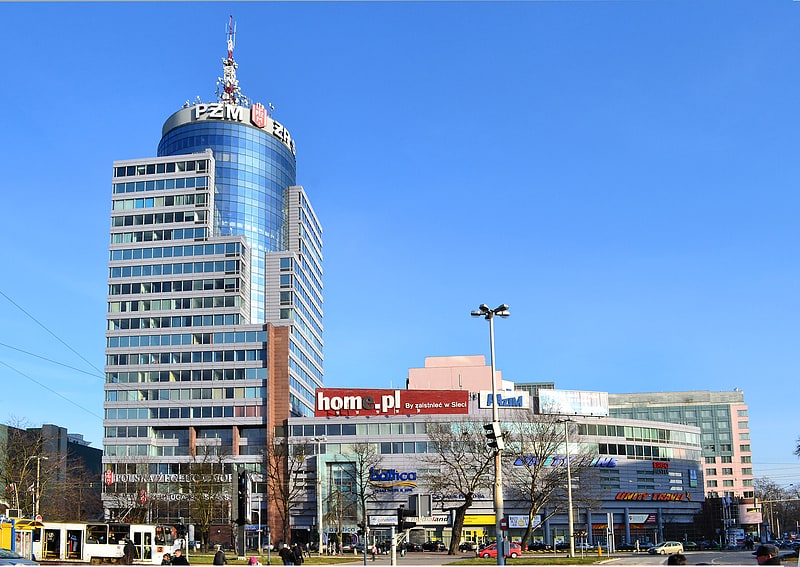
Building in Szczecin, Poland. Pazim is the second tallest building in Szczecin, Poland, after the St. James Cathedral, if including Pazim's spire. It contains twenty-three floors and is 92 meters tall. The building was designed by Milijenko Dumencić. It is the headquarters of Polsteam, with its name originating from company's alternative name abbreviation, PŻM.[24]
Address: Szczecin, Pl. Rodla,budynek Pazim
Kościół Matki Bożej Różańcowej
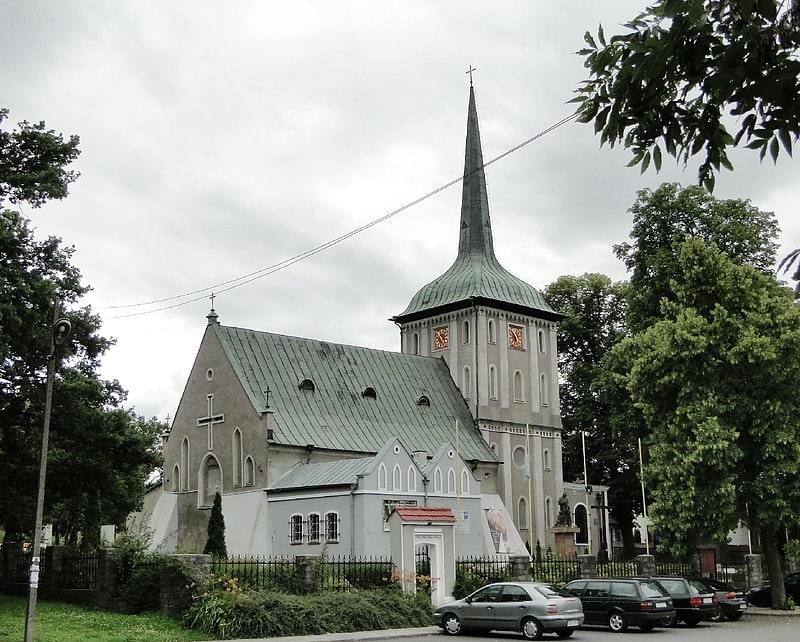
Church of Our Lady of the Rosary - is located in the oldest part of the Szczecin housing estate Gumience on Lwowska Street. The church was built at the end of the 15th century as a hall church, without a tower and without an architecturally separated presbytery. At the end of the sixteenth century the church received a barrel vault with lunettes. In 1800 a timber-framed tower was added to the church, the church walls were strengthened by adding buttresses, and the window openings were rebuilt.
General renovation of the church began in 1979. During the extensive work, the interior was renovated, a sacristy, a porch by the tower and catechism rooms were added.
At present, the body of the church has Gothic (body of the nave), Renaissance (the vault) and Neoclassical (the tower) elements. The church is surrounded by numerous annexes.
The furnishings include an 18th century Baroque high altar, a neo-Gothic baptismal font and a bell from 1708.
In front of the church, on a pedestal that was once a monument to those killed in World War I, a statue of Christ was placed.
On April 4, 2020, during a church service, police intervened in connection with violations by local worshippers and Roman Catholic clergy of a national quarantine measure imposed by the Polish government in the wake of the global outbreak of the SARS-CoV-2 coronavirus. Anti-epidemic regulations at the time limited the maximum number of participants in public gatherings and religious ceremonies to 5 people, while several dozen worshippers had gathered in the church. The intervening police officers referred the matter to the Sanitary Inspectorate in order to initiate appropriate administrative proceedings against the local parish. The incident was commented on in the nationwide media.
Address: Lwowska 1, 71-020 Szczecin (Dzielnica Zachód)
Muzeum Techniki i Komunikacji – Zajezdnia Sztuki
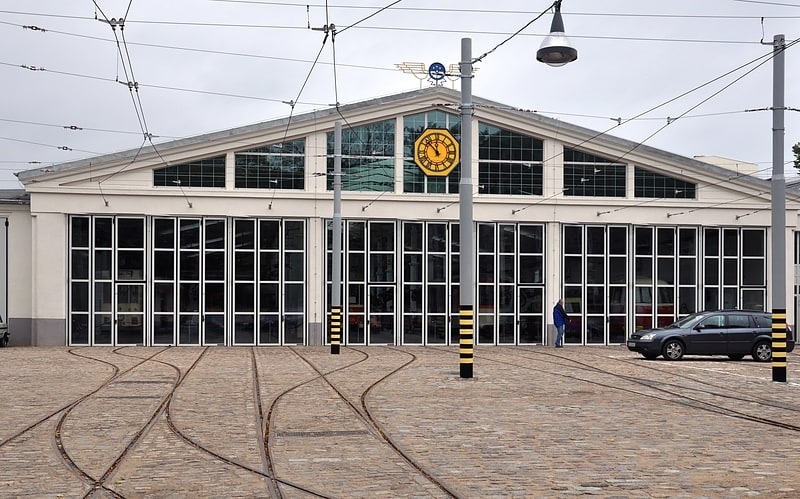
Muzeum Techniki i Komunikacji - Zajezdnia Sztuki in Szczecin - museum in Szczecin. One of the largest technical museums in Poland.
Address: Niemierzyńska 18 a, Szczecin (Dzielnica Śródmieście)
Pomnik Czynu Polaków
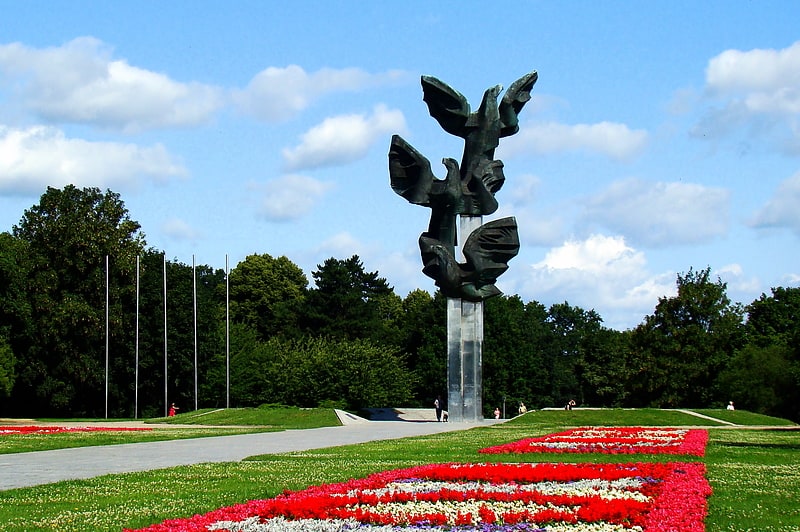
Czynu Polaków Monument - a monument located in Szczecin in Kasprowicz Park vis-à-vis Jasna Błonia. It was designed by Gustaw Zemła and unveiled in 1979.
Address: Piotra Skargi, Szczecin (Dzielnica Śródmieście)